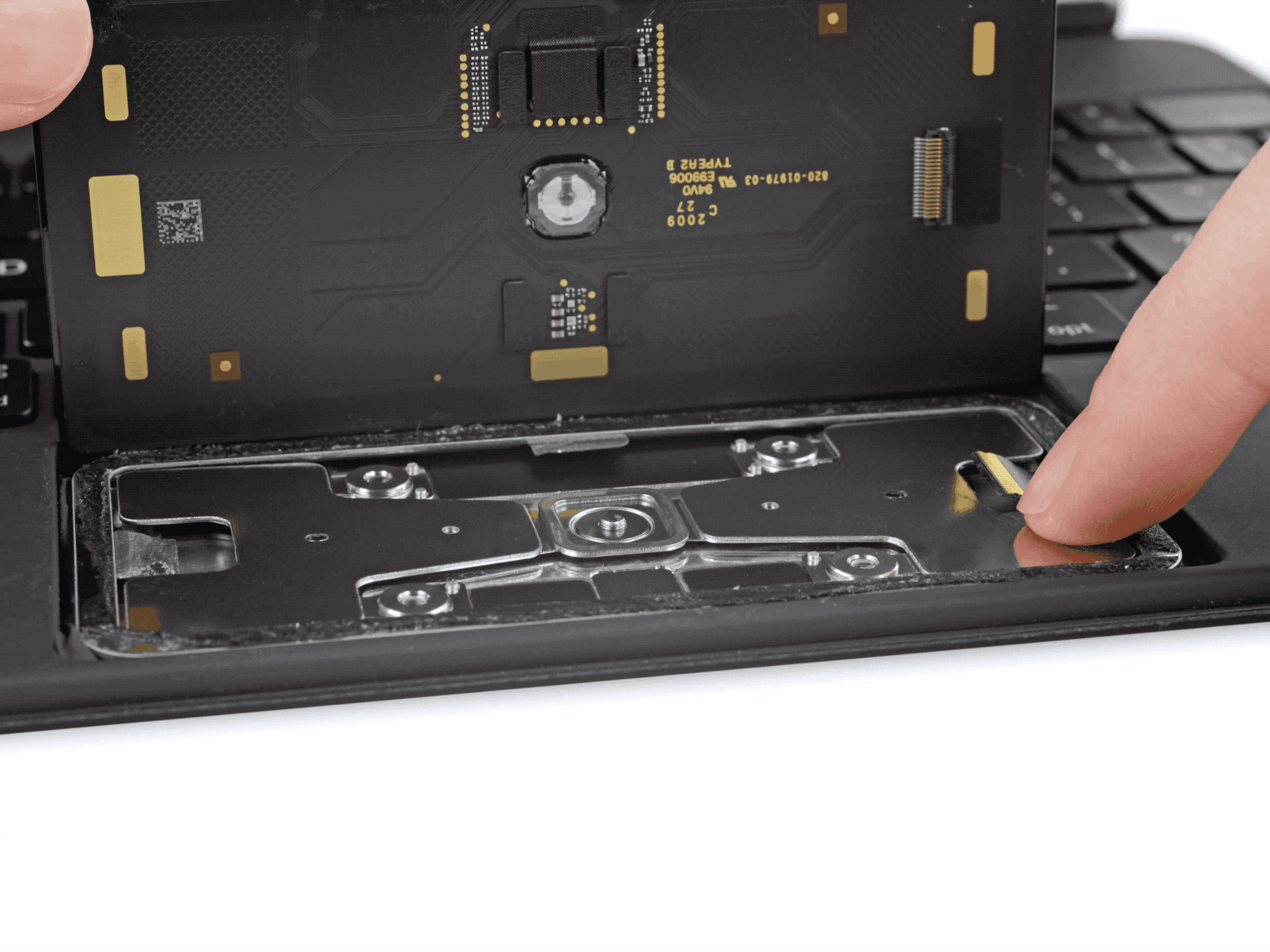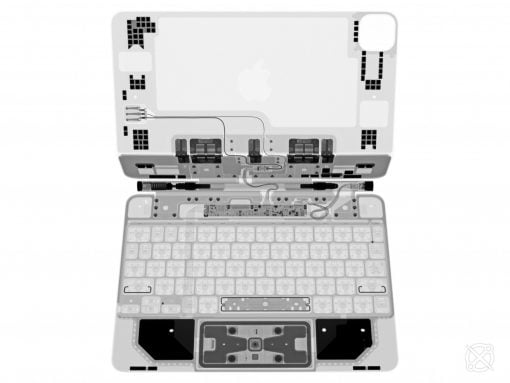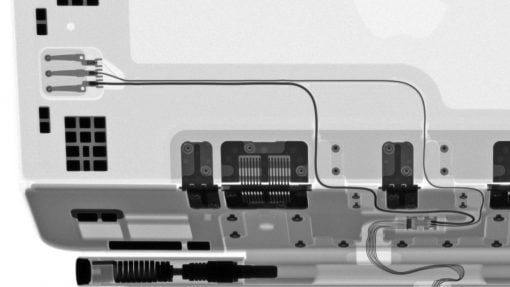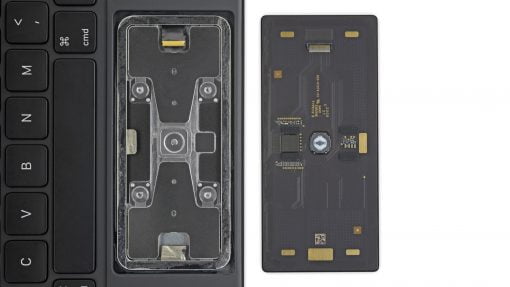ifixit shows us the inner workings of the new Magic Keyboard for the iPad Pro. This keyboard is impressively complex. In the x-ray view you can see all the hidden wiring, magnets and spring-supported hinges. In addition, there is the mechanics of the individual keys. So the price of almost $400 comes from somewhere.
A look at the trackpad’s mechanics is particularly interesting: Since Apple uses a Taptic Engine (in layman’s terms a wobble motor, i.e. a moving mass) in all iPhones and MacBooks to simulate a click, here with the Magic Keyboard you again fall back on a small round mechanical switch, as it was used with the first glass trackpads that could actually still be pressed down. Owners who still have a unibody MacBook in use will remember this.
But in order to make it possible to press down the entire surface of the trackpad during use, Apple has come up with a clever little mechanism under the glass trackpad: no matter where you press the surface, you don’t press the little switch directly, but always via the detour of the mechanism: That way the trackpad lowers and raises itself evenly everywhere. Clever and probably cheaper than a model with Taptic Engine, and perhaps only possible because the specimen used is not quite as large in terms of surface area.
For users who have been waiting for a keyboard for their iPad Pro, the complex construction is a great deal. All those who only need a small lightweight device with a keyboard and little computing power can look around for a used 12″ MacBook. This is now available at a very reasonable price and at 920 grams it is also significantly lighter than a 12.9″ iPad Pro with keyboard (1.351 kg, almost 47% heavier) and even an 11″ iPad Pro with keyboard (1.072 kg, almost 17% heavier). However, you don’t have the flexibility of an iPad then.







